What to See, Experience, and Explore at Miami Art Week 2025
We checked in with our former podcast guests who will be inching through Miami traffic, unveiling new works, signing books and revealing new projects this year.
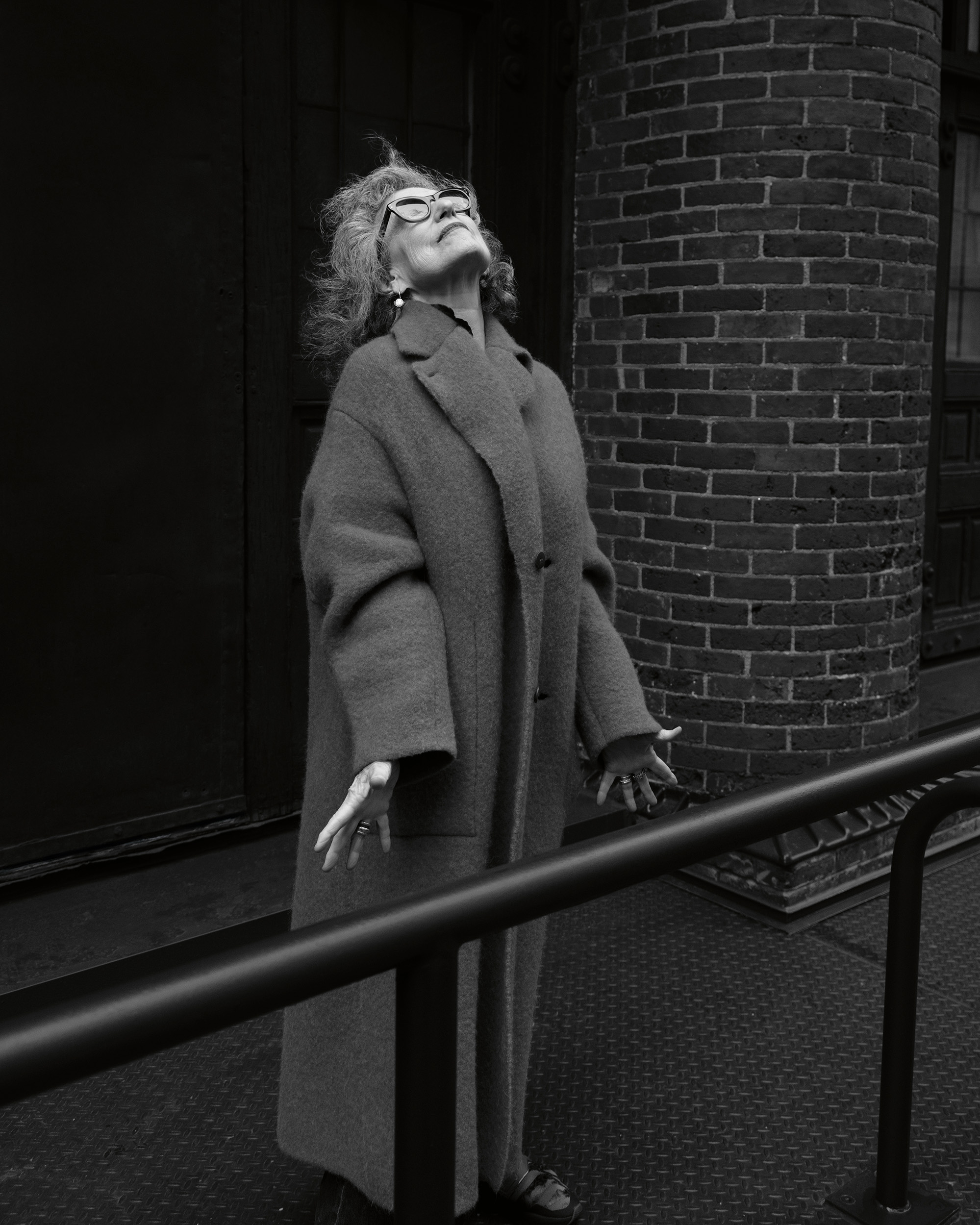
Janis Provisor had a successful art career before she and her husband took a risky detour into the world of luxury design. Now, decades later, she’s returned to her more introspective roots as an abstract painter. Janis Provisor’s long career as a critically acclaimed, multifaceted artist has taken many serendipitous and fortuitous twists—not to mention international turns—over the years. The painter, now in her 70s, was born in Brooklyn and grew up in Cincinnati. Inspired by the work of artist Richard Diebenkorn, she moved to California at an early age in 1968 to attend the San Francisco Art Institute (at the time known as the California School of Fine Arts).
Later, after relocating to New York, she worked with the tastemaking gallerist Holly Solomon and was one of six artists asked to participate in the second group exhibition series at the fledgling New Museum. From there, she collaborated with Kathan Brown’s Crown Point Press etching studio, taking an early trip to Asia to make prints. This began her love affair with China, where, in the 1990s, she moved and founded with her husband Fort Street Studio, the still-in-demand luxe, hand-knotted silk carpet brand that has become a darling of the art and design communities. She eventually stepped away from the business in 2021, after stints in Hangzhou, Hong Kong, Italy, and France, to focus on her art full-time once again. Provisor’s works are included in the collections of the Museum of Fine Arts, Houston; the Brooklyn Museum; the Yale University Art Gallery; the National Gallery of Art and the Library of Congress in Washington, D.C.; and the Fine Arts Museums of San Francisco, among many others nationally and internationally. In her current practice, she makes vivid paintings that are seemingly autobiographical, exploring themes of abstraction and precariousness. These psychological works incorporate text and writing directly onto the canvas, sometimes obscuring or leaving in a stream of consciousness with words or phrases visible. She’s also experimenting with painting on large-format printed iPhone photographs, using them as a starting point for some of her new work. “The body of work that I do has a thread,” Provisor says. “But I don’t feel that I do the same painting repeatedly. I’m not interested in that. I don’t work in an obvious series where there’s slight permutations from one to the next. Sometimes yes, but I have a hard time doing that.”
After a standout presentation of works on paper, and a showing at the Independent Art Fair last spring, Provisor was invited this winter by the directors of the artist-run Canada gallery to mount “Living on Hart,” her first solo show in Manhattan since 1991, as well as a show at Madrid’s Fahrenheit gallery that opened in February. “I am interested in a painting imparting some kind of psychological quality but still being abstracted, maybe beautiful, maybe ominous,” Provisor says. “I like the idea of it looking fresh.”
Your solo show of new paintings and works on paper recently opened at Canada gallery in New York’s Tribeca, but before we discuss it, let’s talk about your artistic journey.
If you want to start very early, I was born in Brooklyn, and my mother was from Cincinnati, and she didn’t feel comfortable with my father’s family, who were more intellectual. She encouraged my father to move to Cincinnati, and she felt that he could make a better living as a lawyer there after the war because a lot of his friends were in the same field. So I grew up in Cincinnati. I think because my attachment to New York was so strong, my father would send me, and not my brothers who were younger, back to New York because he had assimilated in Cincinnati by that time, but he sent me sort of from the fourth grade on, by myself, to stay with my relatives. I spent a lot of time in New York growing up. My aunts and uncles took me to museums; they were a large part of my life and a huge influence. But when I decided to get out, I wanted to go someplace where there was no influence. I guess I finally left there when I was about 21 or 22. I’d never been west of the Mississippi. I went and finished up school at San Francisco Art Institute, and I think that’s the first time I started really feeling like I was an artist.
And that was during the 1970s?
It was 1968, an amazing time to be in San Francisco. I feel very lucky. I had a studio on Haight Street. The Art Institute was a wild, interesting place, and one of the main reasons I went there in the beginning was because of a Richard Diebenkorn painting in the Cincinnati Art Museum. I used to go and sit in the museum under the painting and think of how to get out; I was really enamored with his work. I wanted to go to the Art Institute because Diebenkorn had been there. That was the impetus. And being in San Francisco at that time was amazing, and I was there off and on for a long time. I went away to teach at different places; I taught at California State University, Humboldt State. I taught at the University of Texas at Austin, and I kept going back to the Bay Area. I had tenure-track jobs—which I was lucky to have—but I wasn’t interested in being a full-time teacher. Once I started making enough money from my art, I quit and gave up those jobs.
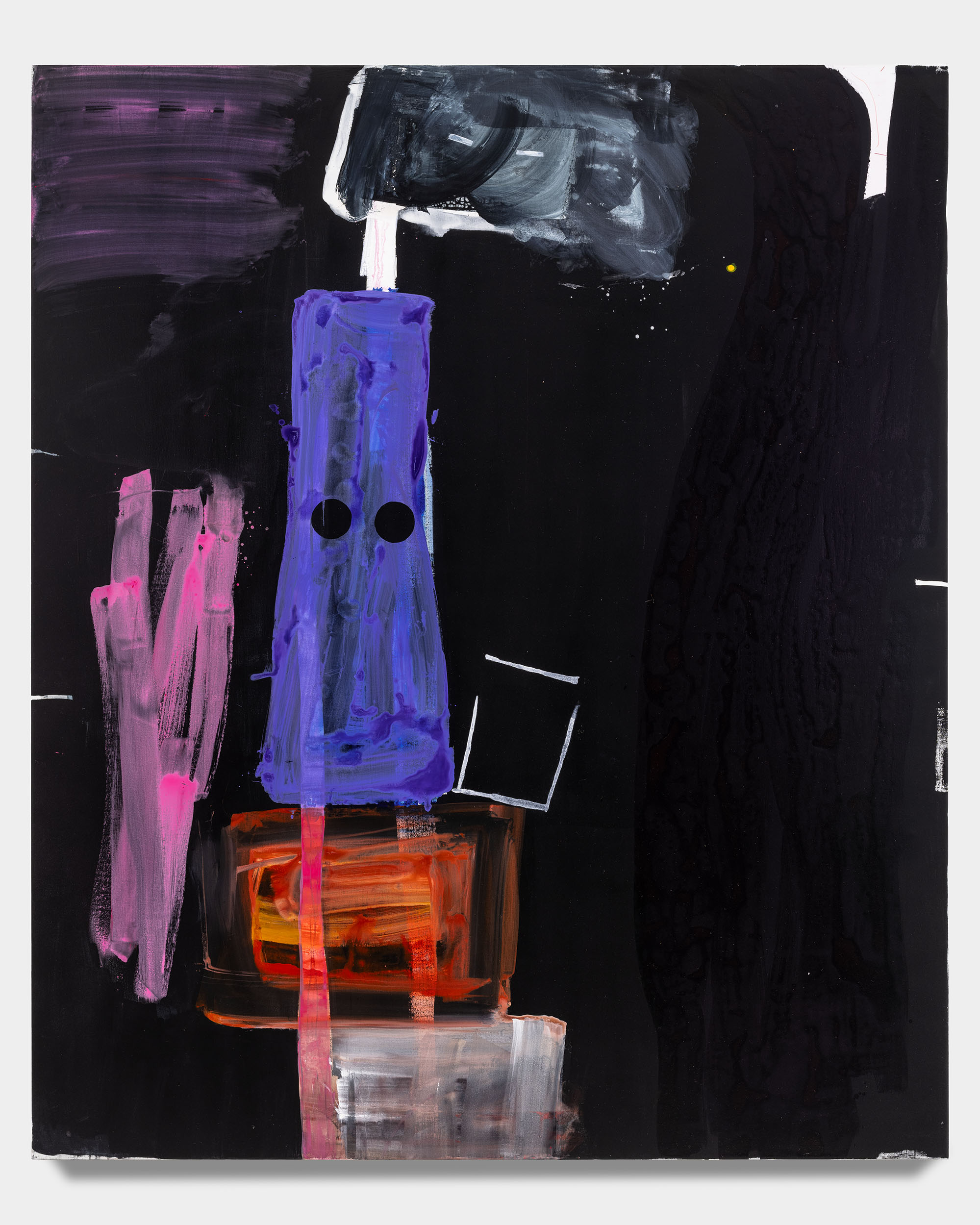
How did your relationship with the legendary art dealer Holly Solomon come about?
I went on a trip to New York to take my work around. The art world was much smaller. And through somebody, I met Holly. Well, it was sort of interesting, there was a guy named Mitchell Kahan, who saw my work somewhere, and he was then the director of the Montgomery Museum of Fine Arts in Alabama and then the North Carolina Museum of Art. He was interested in my work. He was an interesting guy. He ended up being the director of the Akron Art Museum for 20 years. He knew somebody at Holly’s, and he told him, “You really need to see her work.” So I got an appointment. In those days, you could get appointments. It’s very different now, you know, and in a way the art world was so much smaller. Well, not in a way, it was so much smaller, so I met this person. Horace Solomon, Holly’s husband, saw my work while I was talking to the director, Neil Printz. He said, “Can you leave these paintings here? Holly’s out of town, but she’ll be back in a couple days.” I said I could leave them for a day or so, and when I got back I walked in the gallery and Holly said, “Oh, you, I want to see you,” and that was the first step. Then she came out to San Francisco, I think for a Mary Heilmann show at a gallery called Daniel Weinberg Gallery. She wanted to make a studio visit, but I was living up north then, and I knew she had no sense of how far away that was. So she asked me to bring a few paintings to her hotel. She was quite wacky and fascinating. She was like an idiot savant: brilliant and dramatic, and impossible; everything and every other adjective you can give her. But she took paintings off the wall of the hotel and put my paintings up that I had brought, and I had support from several of the curators at the Berkeley Art Museum. Mark Rosenthal, David Ross, and Michael Auping were sort of a triumvirate there, and later she called and offered me a show and asked me to join the gallery. I had my first show at Holly’s when I was still living in California.
And you were one of the first artists to have a show at the New Museum?
At the same time during the trip when I met Holly, I met Marcia Tucker, who was at the New Museum, and she asked me to be in the second show of the New Museum, which was called “Outside New York.” I think the first one was called “Inside New York.”
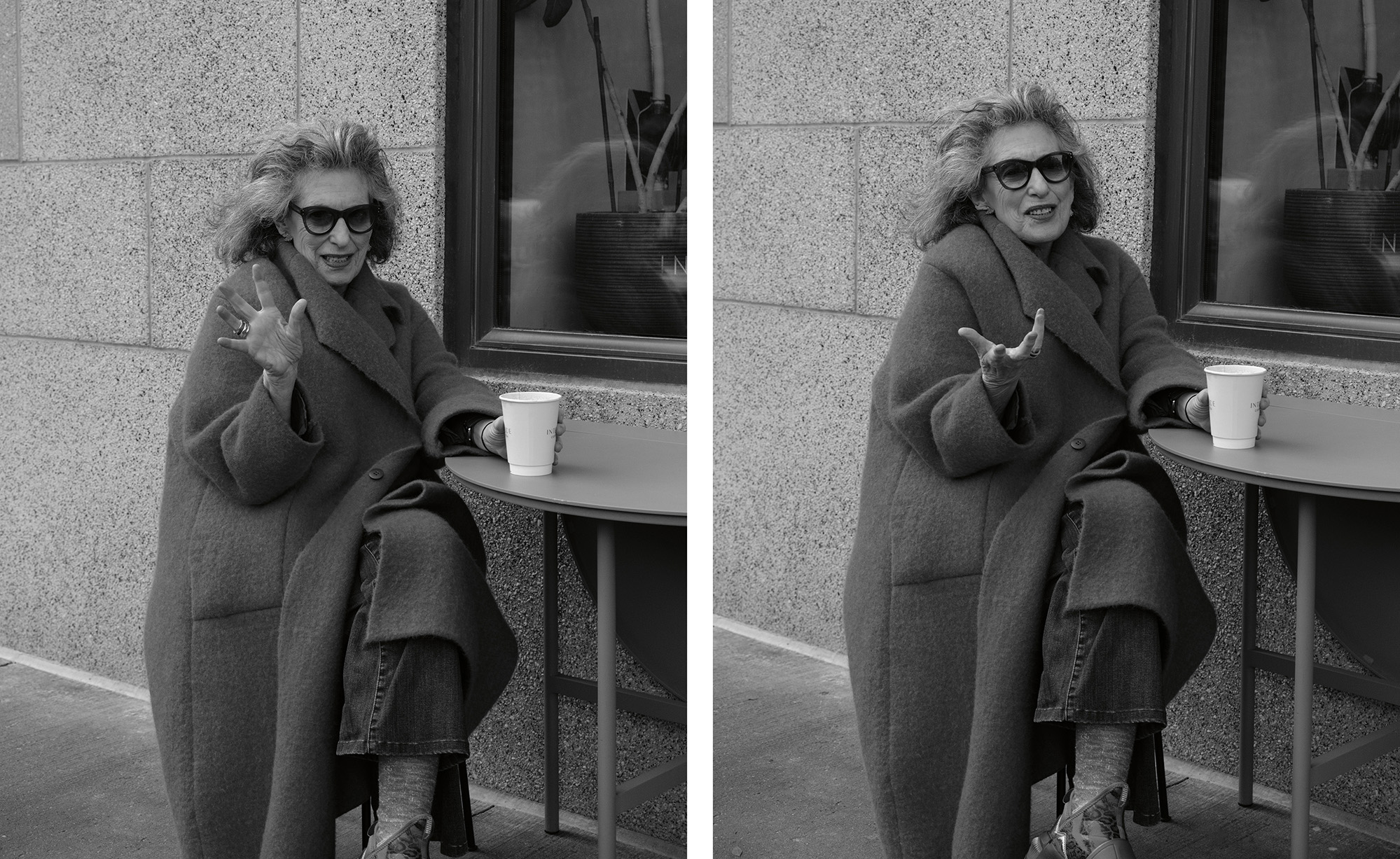
This was a group show of various artists. I also heard an interview where you mentioned that while you were still in San Francisco, you also met a woman who ran a print company called Crown Point Press, which led to some fortuitous outcomes.
Oh yeah, Crown Point Press. Do you know it? Crown Point Press is probably one of the most major print publishers and published many, many artists that you know from across the board, from Richard Diebenkorn to current artists like Laura Owens, I mean, on and on.
Kathan Brown, who was the owner, was really quite a visionary. Once she took a bunch of conceptual artists and people to an island called Tenerife to do work. The main place is in San Francisco, and that’s an etching studio. But she had invited artists to do different things, and at one point she was taking artists to Japan to make prints, artists like Alex Katz and Francesco Clemente and a lot of different people, but then it became too expensive to work in Japan. That was the time when the yen was very high. Then she decided to take some artists to China. And she invited me. She said, “Do you want to make prints in China?” I said yes. It was the first time I really worked with her, and it was a magical experience because my husband, Brad Davis, who is also a painter and who was part of the Pattern and Decoration movement—we met at Holly’s. We were with people before. He’d been involved in literati Chinese painting, and we got together over that. I was looking at Chinese literati painting when I was changing my work, and he said, “You’re not going without me.” And Kathan said that’s fine. There were about five of us. And what was so magical about it was that it was like being a child again. Suddenly, we were in a new environment, which was very exciting. We were like kids, who could just get up and run and do things. And it was great. But it was also at the time of Tiananmen Square. And so, it was sort of a revolutionary time to be in China. The country was starting to be wide open. People were excited, people were marching. It just was by coincidence that we were there then. And that was an amazing moment in my life. I went on to make prints in San Francisco with Kathan afterward.
That was 1989. How long was that trip?
Three weeks. We went to Hangzhou. We climbed mountains, which was sort of amazing. I mean, we had experiences that were just incredible, incredible across the board. And we were in Shanghai. I have seen Shanghai change from being, I won’t say primitive, but slow, difficult, very Communist party to now. I mean, there’s been a full circle. China’s not in a good place as far as I’m concerned now. But for us, it was terribly exciting at the time. And then, when the art market in the early 90s was faltering, nothing like 2008, but it was tough then, we decided to take a year off and took our kid out of school to go to China and Hong Kong, and then we stayed for nine years. It was bizarre.
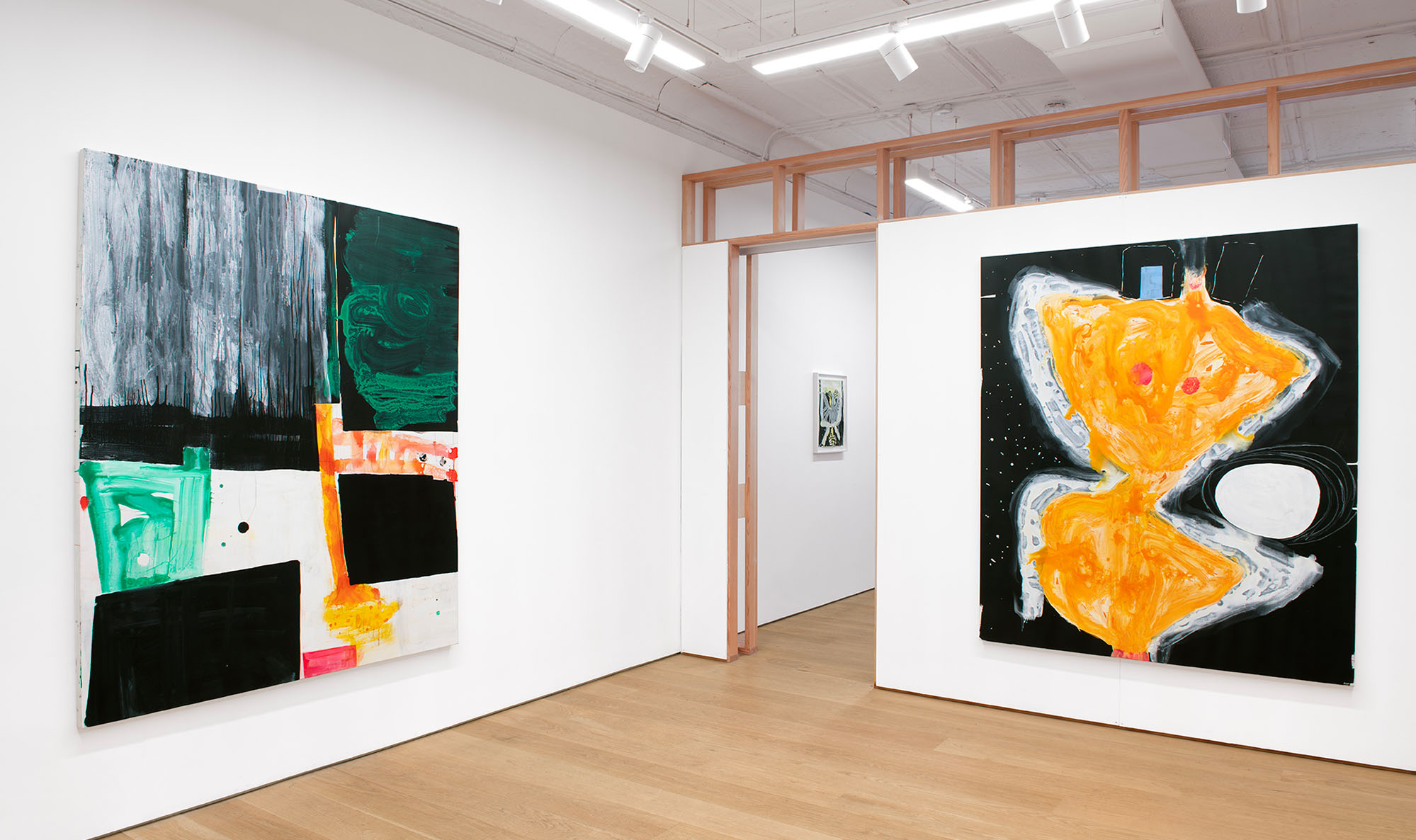
When you got to China, you were working with your husband in a studio, and he had the idea to design a carpet for your New York loft, and that’s how you started Fort Street Studio, the hand-knotted silk carpet company. How and why did you get into rug design?
It was just the strangest thing and sort of serendipitous. I can just tell you this: We were renting a tiny flat, cold-water kitchen, everything for $4,000 a month. This was in 1994. And our loft was being sublet for $3,000 a month, and that was 3,000 square feet. So it was just insane. But China: Brad came home one day after being out and about, and he said, “I met a retired silk-weaving carpet company director. You want to make a carpet for the loft in New York? Would be fun to do, let’s collaborate.” And I said, “Yeah, why not?” We set up a studio in our bedroom, and we were living with naked light bulbs hanging down. There was ice in the toilet in the morning because it was south of the Yangtze River.
It was hilarious. And it’s hard for me when I look back to realize that I went through all that. It was exciting and difficult, but we somehow found a big piece of plywood. We brought it home on some kind of wheelie thing ourselves, took it upstairs, put it over two desks, and one side was his studio and one side was mine. And we just made a deal to paint things that weren’t our own artwork but try to think of something that would work for a rug on the floor. And we tried to do things that were painterly with watercolor, and they’d never done that before. Nobody had, because there wasn’t software then, and it was too difficult to weave. So Brad figured out all this software stuff without ever being on a computer. After the first year when we were there, we were in Hangzhou about eight months and four months in Hong Kong before. Then Brad asked if I wanted to stay another year and just try and get this working.
The company grew into a huge success with showrooms and high-end clients across the globe. And in 2021, Rizzoli published A Tale of Warp and Weft: Fort Street Studio, describing it as “a fascinating look at the transformation of a watercolor painting to a beautiful silk carpet.” Why a book?
It’s a monograph about the founding and development of Fort Street Studio, highlighting our innovations in carpet design, including how we were the first in industry to develop watercolor style with non-repeat in a hand-knotted carpet. It was a more artistic and personal book. Except for a few essays, we wrote most of it, telling our story. We showed installations, reproductions of the actual watercolors, and talked about ourselves as artists. It was also about our adventure in China. We told Rizzoli that we absolutely did not want to do a product book. It felt like the book was our swan song in that world! We were visiting design, but living in art.
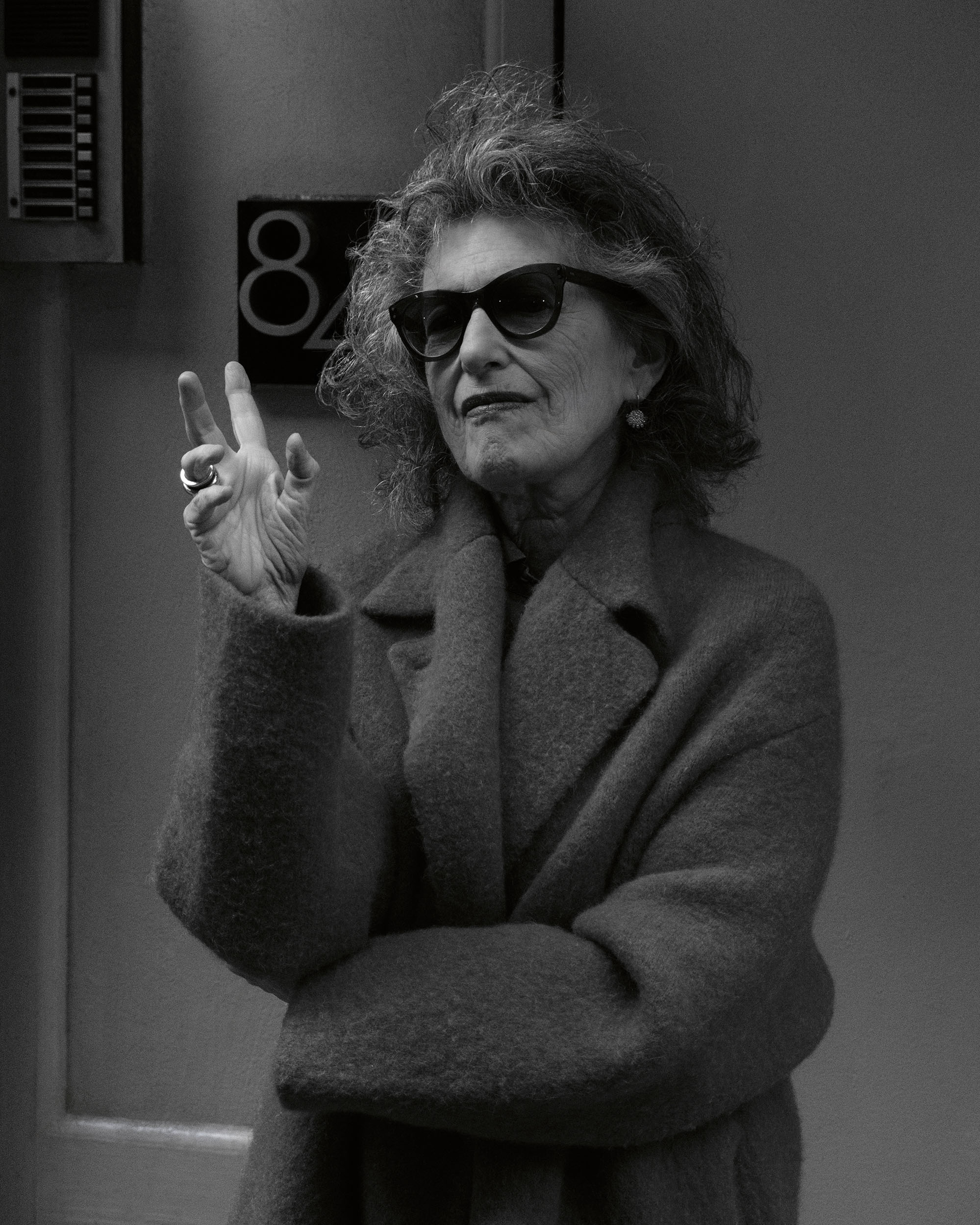
What is it about fashion and design in general and couture in particular that attracts you? You’ve done projects with Hermès creative director Pierre-Alexis Dumas, you’ve designed jewelry, a home in Aspen that was featured in Architectural Digest….
I’ve always been interested in fashion for ideas and shapes. I think that if you just go around certain stores and troll, you can get a lot of ideas, because designers of a certain ilk can be extremely creative. I might not wear any of that stuff, but I look at Comme des Garçons and say, “Are you kidding? This is amazing!” There is a painting in the show in Canada that was inspired by Haider Ackermann. He did a couture look for Jean Paul Gaultier Haute Couture, a purple dress that I think Tilda Swinton wore in some magazine. But the dress was so…. It didn’t look like a dress. It just looked like an animal or some kind of shape. And I just ripped it out. And the purple painting in the show at Canada gallery sort of came from that dress. I find shapes and I look at things that spur me on to other kinds of ideas. I consider myself primarily an abstract artist. I believe in abstraction to create psychological tone and mood and discovery. And I would say that in a certain way, I’m a navel gazer. I’m always dealing with looking inside, too, missing a lot of things out in front of me.
Your show at Canada is called “Living on Hart.” Is there any particular significance to that title?
Hart Drive. I was trying to think of the title of the show, and I liked the play of it, like heart, like hard drive. And so that’s why “Living on Hart.” I thought about it because I have had pieces of art that I’ve titled Living on Laight, because our place in New York is on Laight Street. I like the play of that, living on late. And I’ve had things called Good Night, Hong Kong, living in Hong Kong, that kind of thing. So that’s where the title started.
How would you describe your paintings in “Living on Hart?” Are they autobiographical?
They are autobiographical to a certain point. As I get older, I’m thinking about wanting to pare down, wanting to get rid of excess, if I can. I feel like I’m interested in things that are precarious, on a precipice, feeling like you’re falling, but you don’t fall. And I’m interested in that liminal ledge between mostly abstraction and occasionally a figurative element. What I noticed in the last year or so, something that was quite interesting, is that I don’t look back that much. I mean, of course, we all do to a certain degree, but a few of my paintings from the 1980s came up at an auction somewhere, and I looked at one of the smaller paintings of mine in the auction for a long time. And what I recognized is how many similarities there are to what I’m doing now. The approach is different. The use of materials is different. They’re much looser, very direct now. Yet there are images floating on grounds that are abstract or lean towards some recognizable something, whether it be a cross, whether it be another form. And I’ve used eyes off and on forever.
And how do you work? What’s your process of working? Or do you not discuss what your process is?
I do a little bit. My process, how I start, and usually starting is always hard for me, is that I never or almost never work on paper and canvas stretchers at the same time. That’s hard for me. I go through a long period of paper, but I don’t use the paper to make paintings necessarily, that’s not how it works for me. I don’t sketch, I don’t plan. I think of color a lot. When I first started painting, again, I had studios everywhere. I couldn’t work on canvases because we were in Italy, we were in Hong Kong, we had studios everywhere, but we worked on paper because it is just too cumbersome to schlep around paintings. As a matter of fact—you’ll laugh—but I literally have art supplies in several different places, still in their basements or where we rented some place. I mean, it’s insane. We were sure we would go back, but we didn’t. But we worked in Italy for several summers before we came up here to Connecticut and moved back to New York full-time. And then, when I had a studio, we had studios in Industry City, and that’s when I started painting on canvas again.
Do you prefer any certain color palettes in your work?
Yeah, I noticed that throughout my history, I’ve worked with a kind of hot color, a kind of fluorescent pink, acidy green. I mean, it just keeps coming back. And I noticed just recently, when I was cleaning up my studios, that I had fluorescent pigments from the time I was a student in San Francisco. Still.
One gets the sense when viewing these works that the paintings are gazing back, observing us and inviting psychological engagement. Is that intentional?
I think that’s true. I don’t plan it. I don’t think about it in those terms, but I think about it as a focal point of looking in, looking out, engaging. You look at it and you see that maybe you see into the painting and it’s sort of ephemeral. I don’t want to nail it down, but I do think that the eye is sort of like your third eye. It’s the center that looks in that comes out. It’s your spiritual eye. And so, I’m interested in all of that. nd as a side note, I’ve been thinking about eyes a lot lately because my husband has glaucoma, and it’s bad. And in one eye, very bad. And so, you start thinking about your sight and what you look at. We joke that he could write books, or he could do this, or he could do that. But it’s like trying to understand what sight is. What is sight? It’s not just looking at the tree in your yard. For all those reasons, I think eyes happen in my work. But I am interested in a painting imparting some kind of psychological quality, but still being abstract and maybe beautiful, maybe ominous and maybe quick. I like that idea of looking fresh. That it was just done.
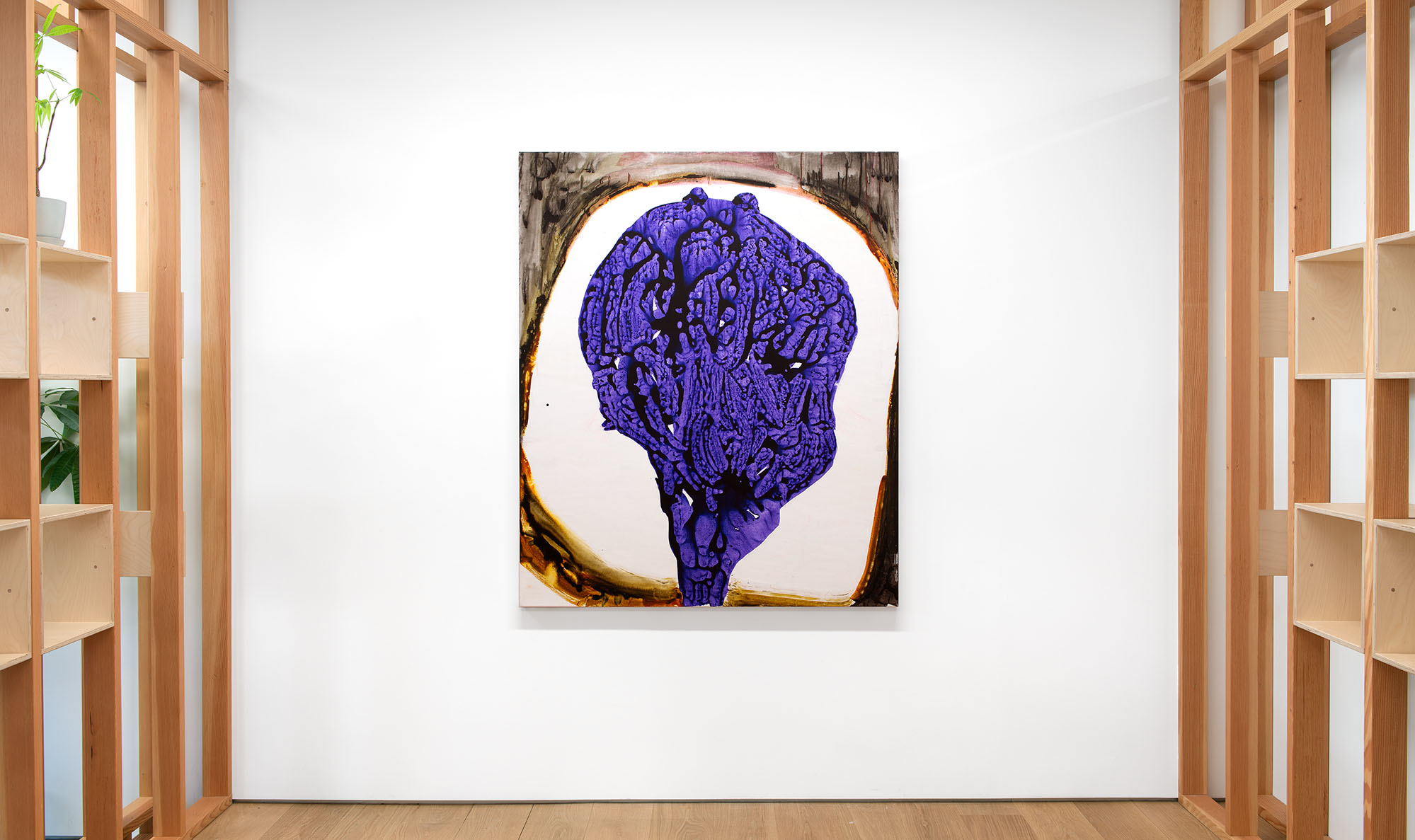
What’s next on your agenda?
I’d like to backtrack a little. You asked me about my process and about it being autobiographical. Something that’s often been very important to me is text. I started using text in my work, and I remember exactly when I started using it. It was when my dad died, 1991. I started writing “Dad” and things like that. And then with these paintings, when I start, I might mix up some colors. I don’t sketch, but I sort of write all over the paintings. I scribble all kinds of things. For instance, when October 7th happened in Israel, and I’m Jewish, I wrote a lot about that, how I felt. Now, I’m writing, I would say, more about how heartbroken I am, and the genocide, and how conflicted I feel. I write all that stuff. Sometimes I just write like, “Oh, I feel so exhausted. I need hormones. Get me through the day.” I write with all kinds of markers, pencils, pens. I have a bunch in my hand, and I just randomly write all over. And with some of the paintings there is just white in the background. The white, I get sort of triple-primed linen, and you could see the writing, but sometimes the paintings are upside down, so you can’t necessarily read it. I don’t necessarily want you to read it. I can’t even remember what I’ve written half the time, because it was truly responding to something in the moment, what I’m feeling or thinking about. And that becomes the impetus.
And then I start painting. And I paint over the words that I’ve written, completely over. It’s like I don’t even see them. But I have one here that they didn’t choose for the show, which is one of my favorites. You could see writing because there’s a whole white area. Sometimes, I scribble. I’ve been scribbling a little on the black. I have one painting that’s in chalk. But you could see some things. I had mustaches in a lot of paintings, but not in the ones in the show. It’s about the idea of power for me, I guess. Not that I want to be a man, but it’s a man’s world kind of thing. And it’s still a man’s world. Just look at who we have in our government now.
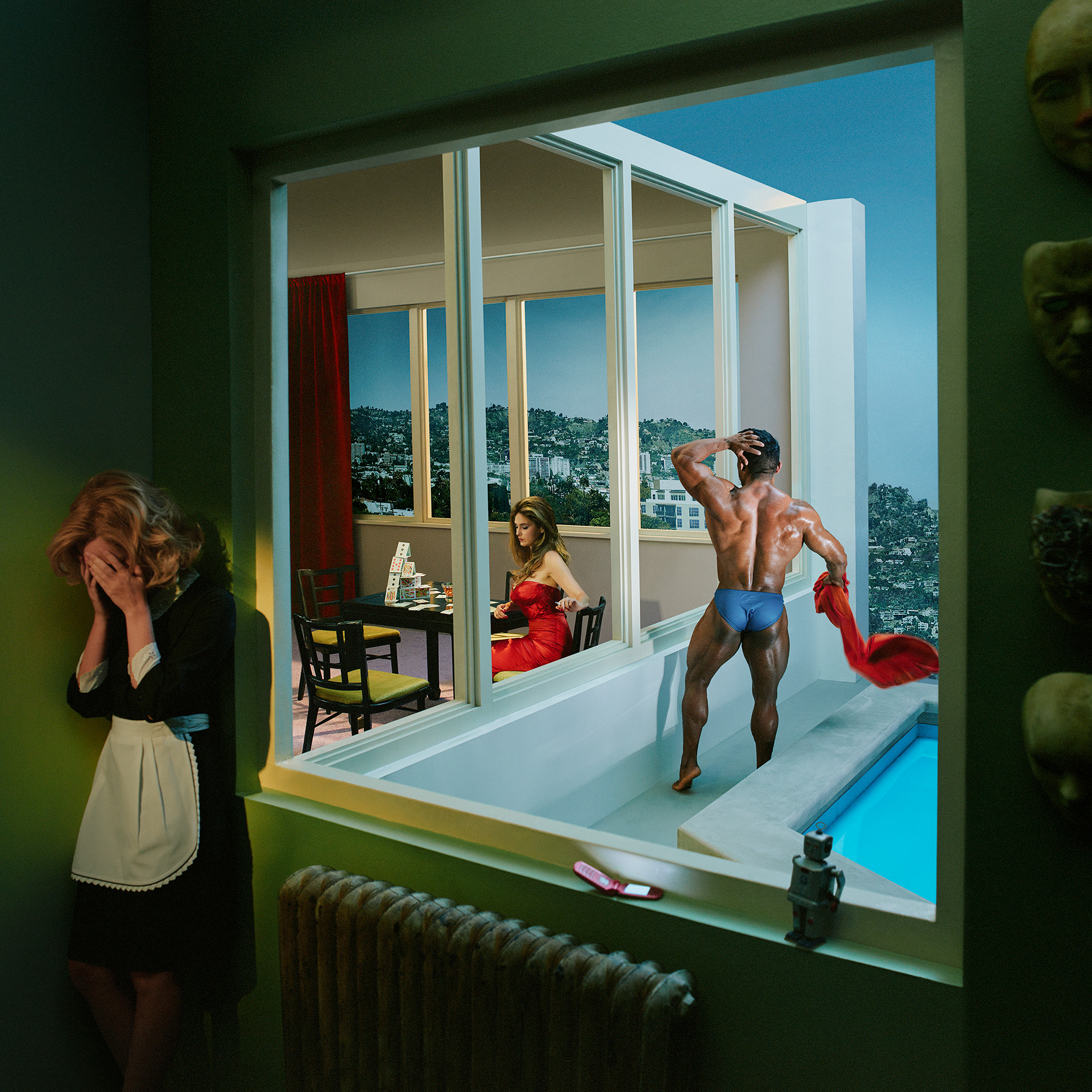
We checked in with our former podcast guests who will be inching through Miami traffic, unveiling new works, signing books and revealing new projects this year.
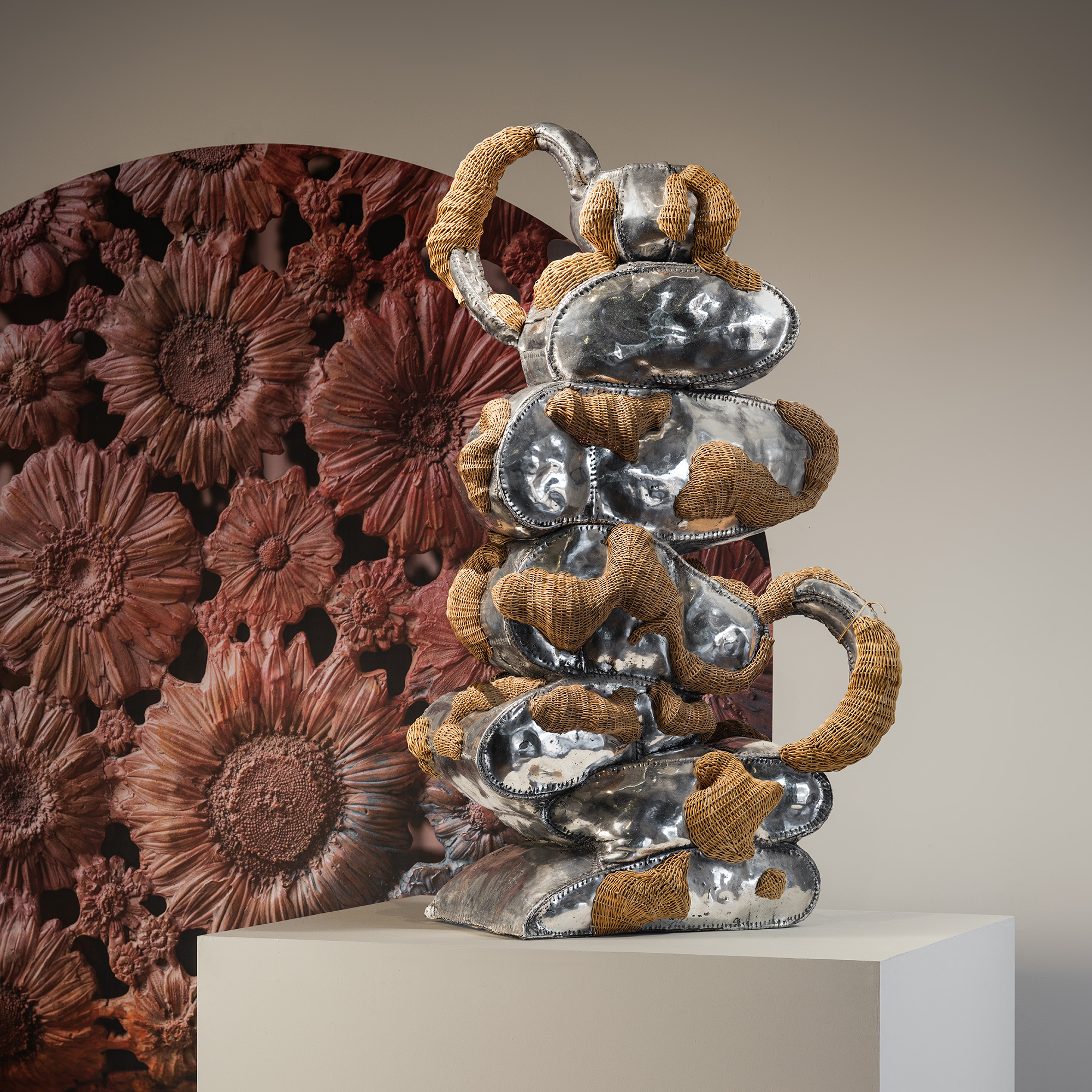
The ecstatic designs of Chris Wolston come to Texas, Juergen Teller's most honest show yet opens in Athens, a forgotten Cuban Modernist is revived in New York, and more.
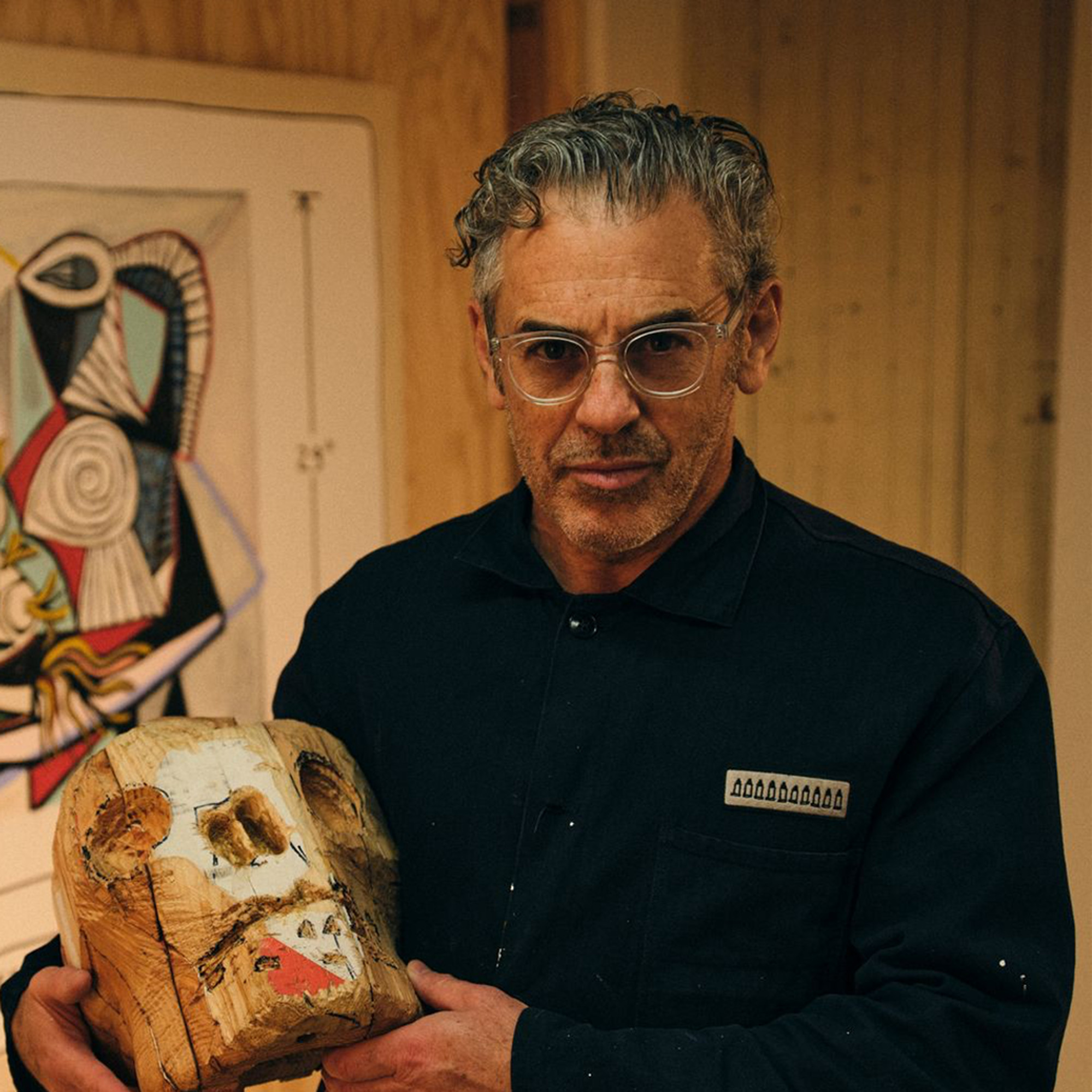
Tom Sachs explores various creative disciplines, from sculpture and filmmaking to design and painting. On this season finale, Dan speaks with Tom about his accidental journey to fine art, how an installation in a Barneys window kickstarted his career, and more.